14 Stunning Variegated Plants to Add Charm to Your Garden
Variegated leaf plants bring a unique touch of color and pattern to any garden. Their leaves show a mix of different shades, often combining greens with whites, yellows, or even pinks. These patterns make them stand out and add visual interest among other plants. Gardeners often choose variegated plants to create lively and textured outdoor spaces. Exploring some of the best varieties can help turn a simple garden into a true paradise.
This post may contain affiliate links, which helps keep this content free. Please read our disclosure for more info.
Variegated English Ivy (Hedera helix)

Variegated English Ivy adds charm with its glossy leaves edged in white or cream. It is a versatile climber or ground cover that brightens shady garden spots. This plant thrives in partial to full shade and prefers well-draining soil. Regular watering keeps the leaves fresh, but avoid waterlogging the roots.
English Ivy is easy to maintain and grows quickly, making it perfect for filling empty spaces. Trimming helps control its spread and promotes a fuller appearance. It can also grow indoors with enough indirect light. Just watch out for pests like spider mites during dry periods.
Hosta Patriot

Hosta Patriot features broad green leaves with crisp white edges that create a clean, fresh look in any garden. It is a shade-loving plant that flourishes in moist, well-drained soil. The variegation holds well even in low light, adding brightness to darker corners. It blooms with lavender flowers during the summer.
Taking care of Hostas means watering regularly during dry spells and mulching to retain soil moisture. They are hardy plants but may attract slugs, so some protection might be needed. Hostas also do well in containers, offering flexibility for garden design. Dividing the plant every few years keeps it healthy and vigorous.
Caladium
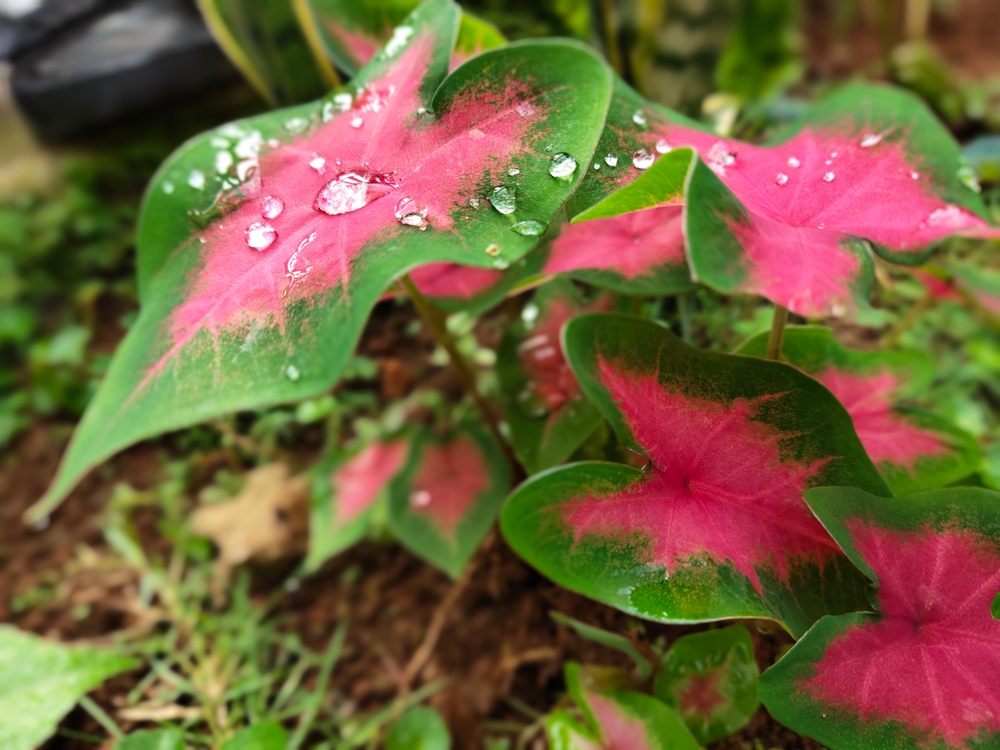
Caladium leaves show striking patterns of pink, white, red, and green, giving the garden a tropical feel. They thrive in warm, shaded environments and prefer rich, moist soil. These plants add vibrant splashes of color, especially in shady beds or containers. Their heart-shaped leaves create a soft, flowing texture.
Caladium bulbs should be planted in spring and watered consistently but not excessively. They do not tolerate frost, so bring them indoors if temperatures drop. The foliage dies back in the fall, so it is normal to let the bulbs rest during winter. Fertilize lightly during the growing season for best results.
Variegated Rubber Plant (Ficus elastica Tineke)
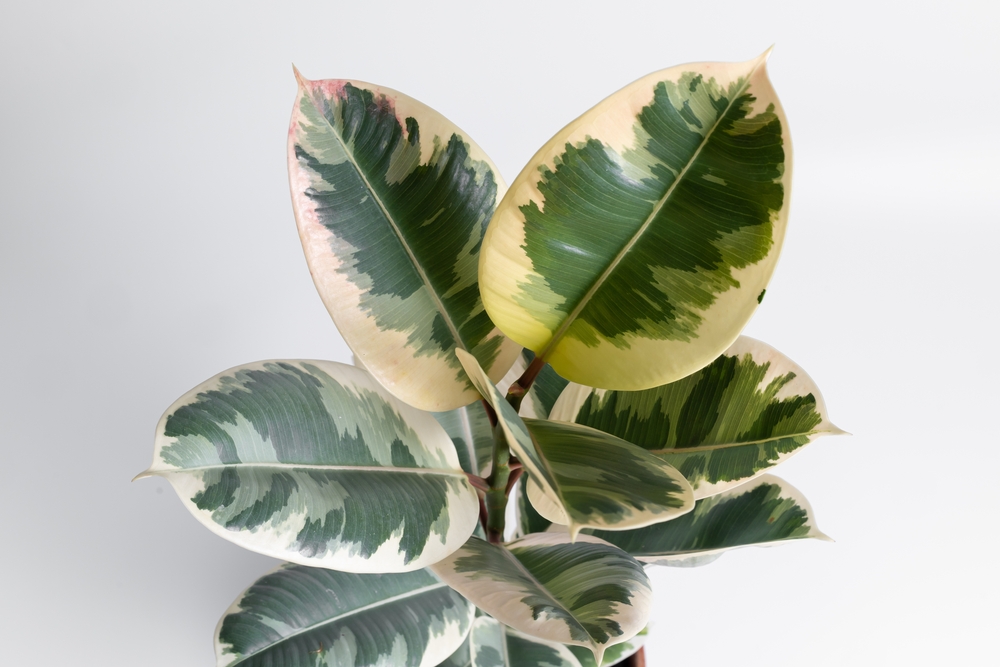
The Variegated Rubber Plant has large, glossy leaves with cream and green marbling that add a bold statement to gardens and indoor spaces. It prefers bright, indirect light and well-draining soil. This plant is low-maintenance but appreciates occasional watering when the topsoil feels dry. It can grow quite tall, making it a focal point.
Rubber plants benefit from wiping leaves to remove dust and allow better light absorption. They are sensitive to overwatering, so proper drainage is important. Pruning helps maintain a desirable shape and size. These plants can adapt well to indoor environments with good light.
Variegated Japanese Pittosporum
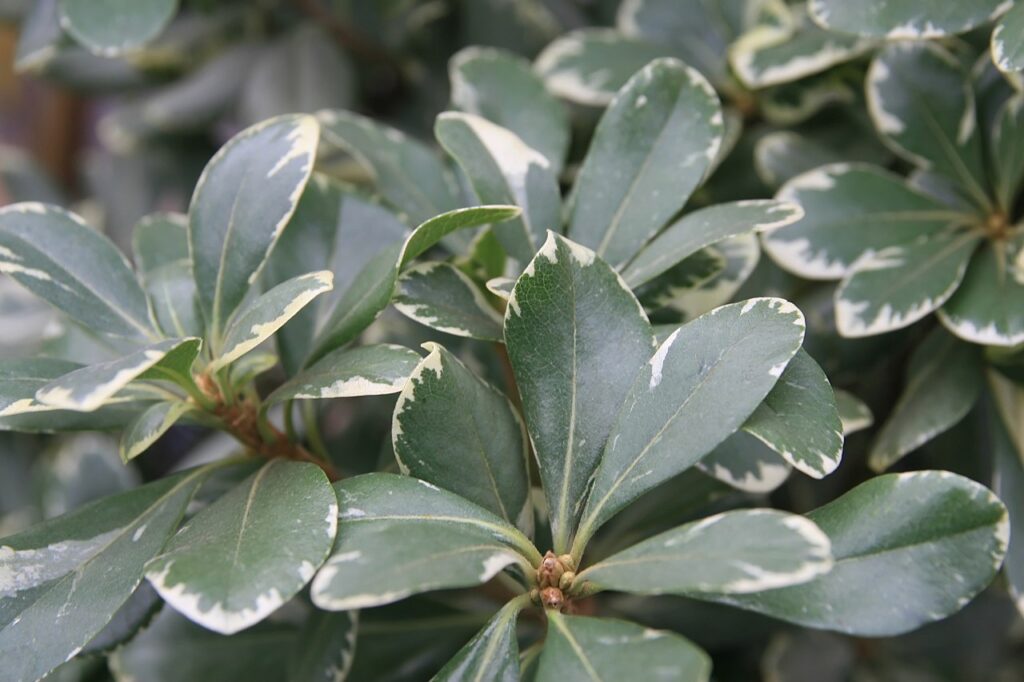
This shrub has small leaves edged in creamy white or yellow, creating a delicate, textured look. It works well as a hedge, border, or standalone plant. Pittosporum prefers full sun to partial shade and well-drained soil. It is fairly drought-tolerant once established.
Routine watering is necessary when the plant is young, but mature shrubs need less frequent irrigation. Pruning shapes the shrub and encourages denser foliage. It is a hardy plant with few pest problems, ideal for low-maintenance gardens. Variegated Pittosporum adds subtle brightness without overwhelming the landscape.
Variegated Boxwood (Buxus sempervirens Variegata)
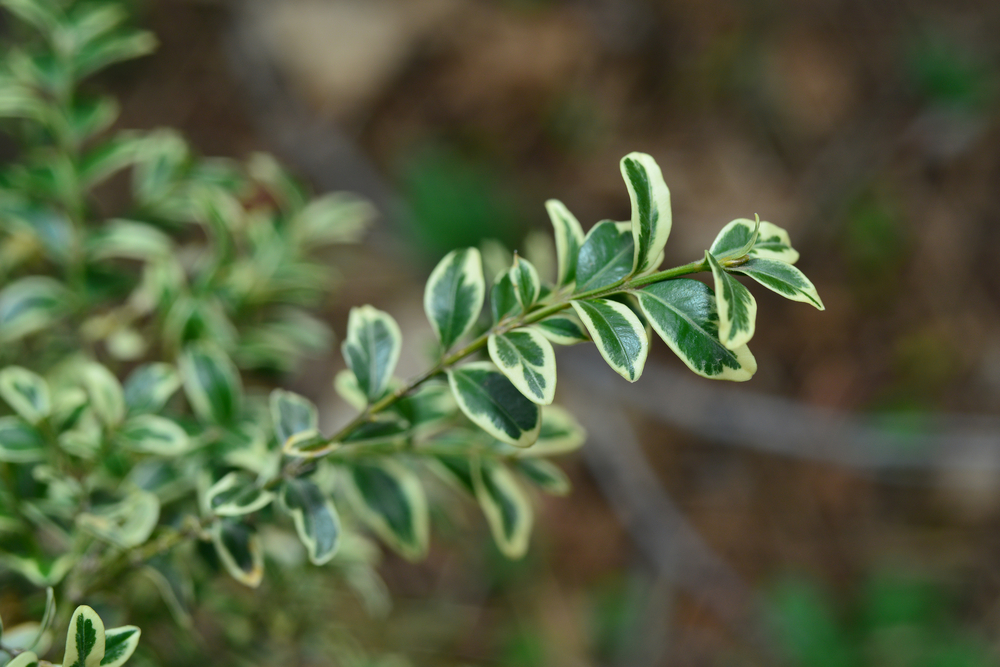
Variegated Boxwood has small evergreen leaves with creamy edges that bring year-round interest. This slow-growing shrub is perfect for formal gardens or low hedges. It prefers partial to full sun and moist, well-drained soil. Boxwoods respond well to shaping through regular pruning.
Water the plant deeply during dry periods to maintain its lush appearance. Avoid overwatering as it can cause root rot. Fertilizing in early spring supports healthy growth. This shrub is a classic choice for adding structure and lightness in a garden space.
Variegated Coral Bells (Heuchera)
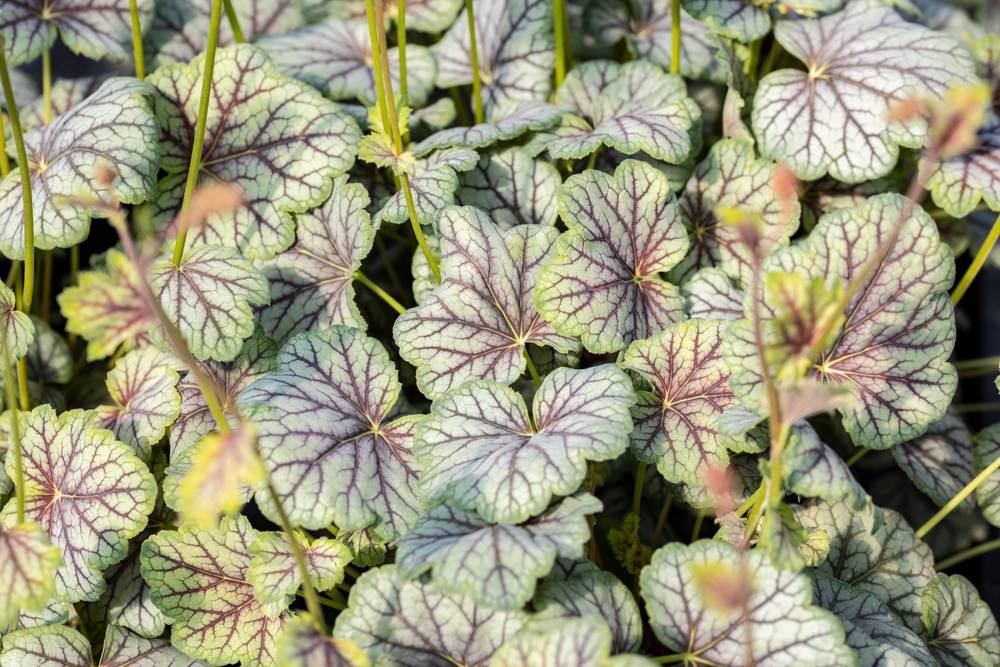
Coral Bells have striking foliage that ranges from lime green to creamy white, adding a soft glow to shaded areas. They prefer partial shade and moist, well-drained soil. Their colorful leaves create a lovely contrast when planted among darker plants. Coral Bells also produce delicate flower spikes in late spring.
Regular watering is essential, especially during dry weather, to keep the leaves vibrant. Mulching helps retain moisture and control weeds. These perennials are deer resistant, which is a bonus for many gardeners. Dividing every few years promotes fresh growth and better flowering.
Variegated Solomon’s Seal (Polygonatum odoratum Variegatum)

Solomon’s Seal features arching stems with elegant green leaves striped in white, adding grace to woodland gardens. It grows best in shade to partial shade with rich, moist soil. This plant spreads slowly to form a natural groundcover effect. Its small, bell-shaped flowers appear in spring.
Solomon’s Seal needs consistent watering but dislikes soggy soil. It requires little maintenance beyond occasional trimming to remove old foliage. The variegation remains attractive throughout the growing season. It pairs well with ferns and hostas for a peaceful garden scene.
Variegated Wandering Jew (Tradescantia zebrina)
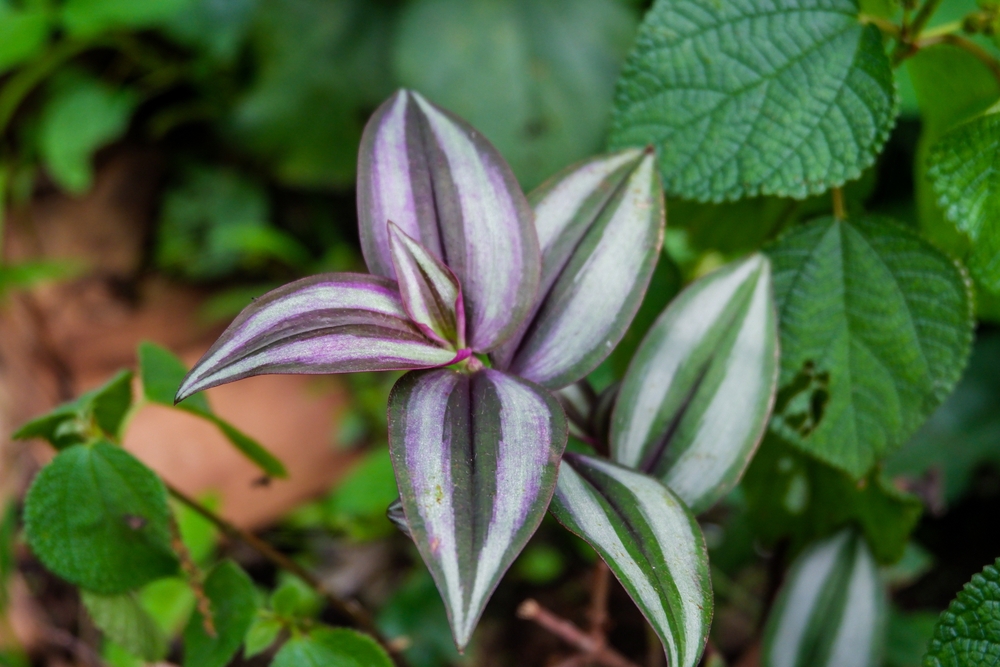
This trailing plant shows purple and silver stripes on its leaves, creating a lively and colorful display. It thrives in bright, indirect light and prefers well-drained soil. Wandering Jew works well in hanging baskets or as a ground cover. Its fast growth adds energy and movement to garden arrangements.
Water the plant when the top inch of soil feels dry to avoid overwatering. Regular trimming keeps the plant full and prevents legginess. It is easy to propagate by cuttings, which is great for sharing with friends. This plant adds a bold splash of pattern that brightens up any space.
Variegated Japanese Maple (Acer palmatum Butterfly)
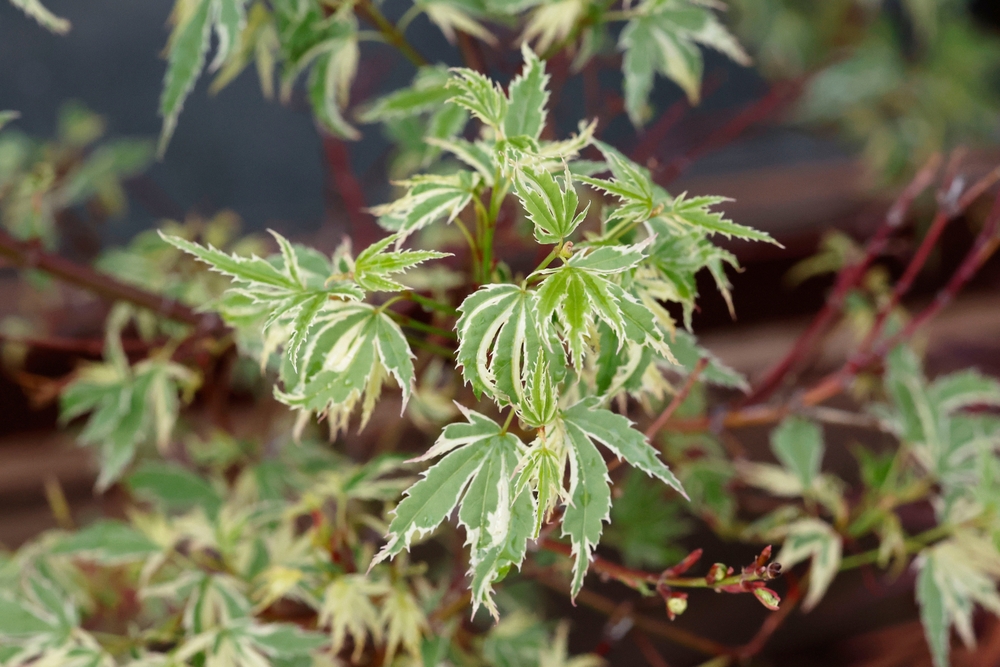
The Variegated Japanese Maple offers delicate leaves with creamy white edges that turn pink in spring and summer. It is a small tree ideal for focal points or container planting. This maple prefers partial shade and well-drained, slightly acidic soil. Its layered foliage adds depth and elegance to the garden.
Water regularly, especially during dry periods, but avoid waterlogging. Mulching helps maintain consistent soil moisture and temperature. Pruning is minimal but can shape the tree to suit the garden design. Japanese Maple brings a refined, peaceful touch to garden spaces.
Variegated Spider Plant (Chlorophytum comosum Variegatum)
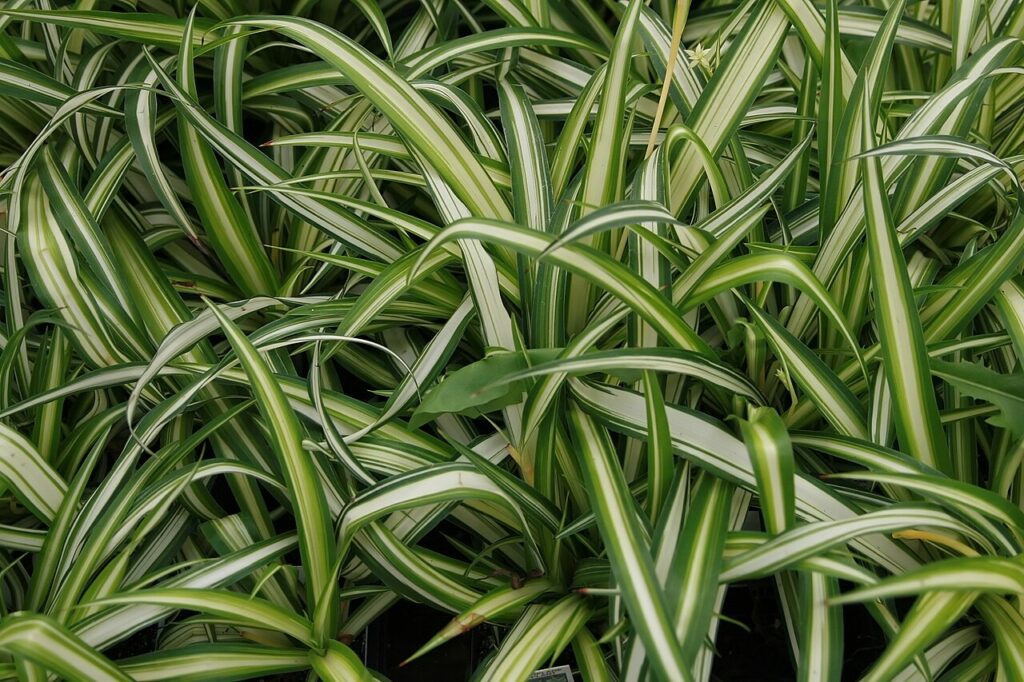
The Spider Plant has long, arching leaves striped with white and green that bring a fresh look to gardens and indoors. It prefers bright, indirect light and well-drained soil. This plant is easy to grow and tolerates occasional neglect. Spider Plants produce small white flowers and baby plantlets that are easy to propagate.
Water when the soil is dry to the touch, avoiding overwatering. It benefits from occasional feeding during the growing season. Regular trimming removes older leaves and encourages healthy new growth. This plant is a lively addition with low care needs.
Variegated Euonymus (Euonymus fortunei Emerald Gaiety)
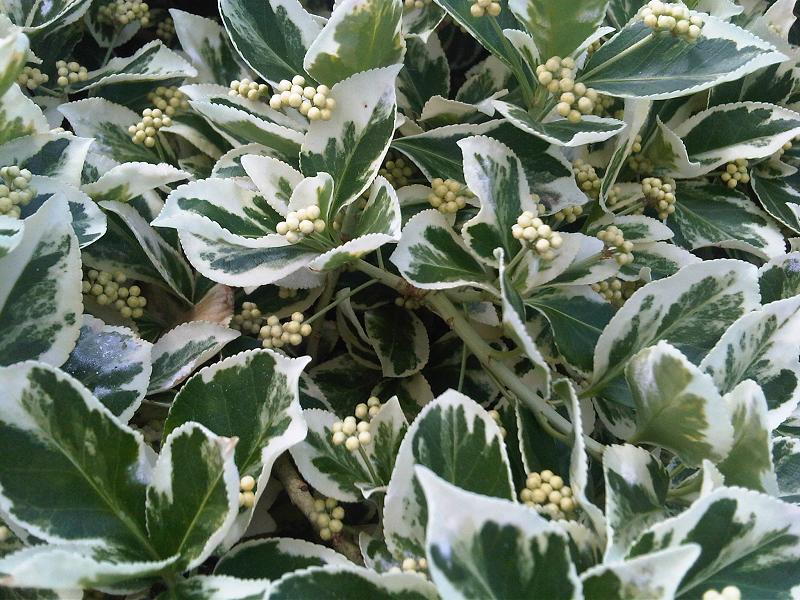
Euonymus Emerald Gaiety has green leaves edged in creamy white, creating a striking contrast that lights up the garden. It grows as a shrub or ground cover and adapts well to sun or shade. The plant prefers well-drained soil and moderate watering. It is fairly hardy and tolerates urban conditions.
Pruning shapes the plant and encourages fuller growth. It can be used for borders or climbing on supports. The variegated leaves stay vibrant throughout the growing season. Euonymus is a dependable choice for adding texture and color variety.
Variegated Sweet Potato Vine (Ipomoea batatas Margarita)

This vine produces heart-shaped leaves with creamy white edges that stand out in containers and garden beds. It prefers full sun to partial shade and moist, well-drained soil. Sweet Potato Vine grows quickly, making it ideal for ground cover or cascading over pots. The bright leaves bring softness and light to any planting.
Regular watering helps maintain vibrant foliage, especially in hot weather. Fertilize lightly to support growth but avoid overfeeding. It is non-toxic and deer resistant, suitable for many garden settings. The vine adds a cheerful touch with minimal effort.
Variegated Bamboo (Bambusa ventricosa Kimmei)
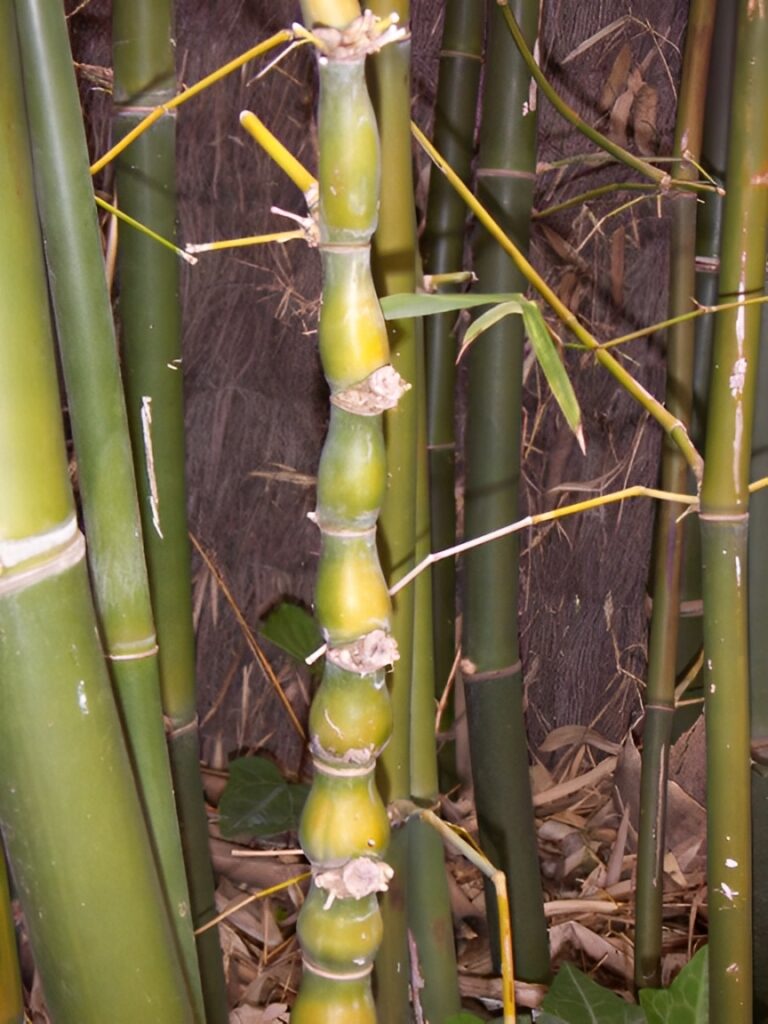
Variegated Bamboo has narrow leaves striped with green and yellow, adding a vertical and exotic element to gardens. It thrives in full sun to partial shade with moist, well-drained soil. Bamboo grows quickly and creates a natural screen or privacy barrier. Its striking foliage catches light beautifully.
Water regularly to keep the soil moist but not soggy. Contain the roots if necessary to control spreading. Bamboo is low-maintenance and can last for many years. It is a great choice for gardeners who want texture and height.
Variegated leaf plants bring unique charm and color that can brighten any garden space. Choosing the right varieties helps create a lively and inviting outdoor area with minimal effort. With proper care, these plants will continue to add interest through changing seasons. Incorporating variegated foliage is an easy way to make a garden feel more dynamic and full of life.
This article originally appeared on Avocadu.
